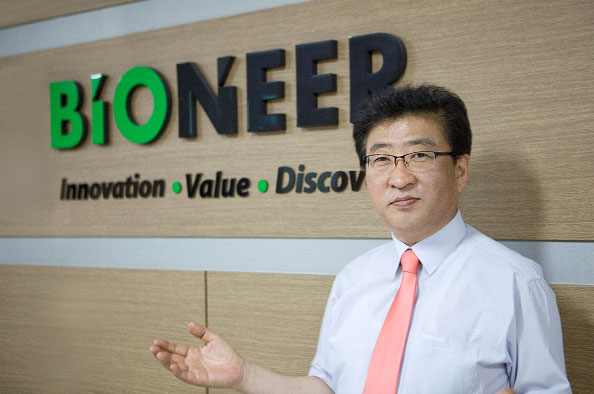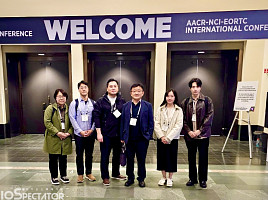기사본문
Bioneer, 3 New Solutions for Progress
입력 2018-08-20 08:01 수정 2018-09-20 09:09
by Jongwon Jang

“Bioneer has developed all of its own reagents and equipment for the analysis, synthesis, and diagnosis of DNA and RNA. Our strategy is to make the best products based on the core technology and price competitiveness that we have. In the future, we will achieve meaningful results in molecular diagnostics, RNAi drug development, and microbiome.”
Bioneer is an important part of the history and present of the biotechnology industry. In 1992, Park started with the desire to supply domestic products to laboratories that used products from foreign countries, and succeeded in developing enzymes and equipment for PCR for the first time in Korea. The real-time PCR was the first in Asia, and the DNA parallel synthesizer was the first in the world. In the early 2000s, the company turned its attention to new drugs, while building its siRNA library. At that time, Bioneer completed the ‘SAMiRNA’ platform technology that overcomes the instability of the RNAi therapeutic agent, and which represents a target achievement.
Bioneer stands at a critical inflection point for growth this year. ExiStation™ 48A, a new automated molecular diagnostic system, has been approved by domestic and foreign companies (in Europe, etc.), and is now on sale. The main feature is that the processes of opening the specimen tube lid to dispense the sample, and then closing the tube lid, are now automatic. This minimizes the exposure of the specimen, reduces the labor of the inspector, and improves safety. In addition, the machine has a built-in barcode reader, which has the convenience and traceability of automatically entering sample information.
They are also accelerating RNAi New drug development. SAMiRNA of Bioneer is a technology to make nanostructure by attaching hydrophilic polymer and hydrophobic substance to both ends of unmodified RNA, which process does not modify the structure of the RNA itself. When RNA with a hydrophilic substance and a hydrophobic substance binds in a certain concentration or more, it forms a spherical structure by forming a microcrystal by itself. This structure makes it possible to move safely from a decomposition enzyme to a target.... <계속>






![[인사]동아쏘시오그룹 임원 인사](https://img.etoday.co.kr/crop/268/200/2246130.jpg)
